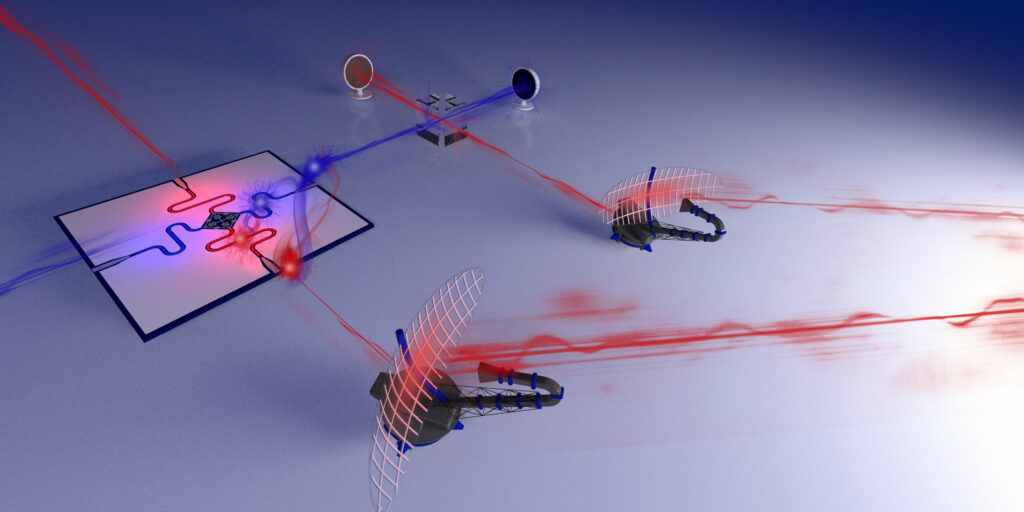The field of Quantum Mechanics is magic and integrating it with devices around us would have a significant impact on technology. Researchers from the Institute of Science and Technology Austria (IST Austria) have invented a new quantum radar which uses quantum entanglement for object detection. This is in the prototype stage now.
What is Quantum Entanglement?
It is a physical phenomenon wherein two particles can be linked together when they are close enough and they become entangled and their properties get connected and they stay connected even if we take those particles too war away in the opposite direction
A research group lead by Professor Johannes Fink at the Institute of Science and Technology Austria (IST Austria) along with collaborators Stefano Pirandola from the Massachusetts Institute of Technology (MIT) and the University of York, UK, and David Vitali from the University of Camerino, Italy have demonstrated a new technology for detection called microwave quantum illumination that utilizes entangled microwave photons as a method of detection.
The prototype, also known as a quantum radar, is able to detect objects in noisy thermal environments and this is its main benefit over classical radar systems. The technology has immense potential and various applications like ultra-low-power biomedical imaging and security scanners.
Working
The working principles behind the device are simple: Instead of using conventional microwaves, the researchers entangle two groups of photons, which are called the signal and idler photons. The signal photons are sent out towards the object of interest, whilst the idler photons are measured in relative isolation, free from interference and noise. When the signal photons are reflected back, true entanglement between the signal and idler photons is lost, but a small amount of correlation survives, creating a signature or pattern that describes the existence or the absence of the target object irrespective of the noise within the environment.
“What we have demonstrated is a proof of concept for the microwave quantum radar,” says lead author Shabir Barzanjeh.”Using entanglement generated at a few thousandths of a degree above absolute zero (-273.14 °C), we have been able to detect low reflectivity objects at room temperature.”
So, this can be considered as a significant development in embedding quantum mechanical concepts into technology and outperforming current technology. Let us hope that we be successful in this and quickly get access to more advanced technology.
Journal
“Microwave quantum illumination using a digital receiver” Science Advances (2020). DOI: 10.1126/sciadv.abb0451

